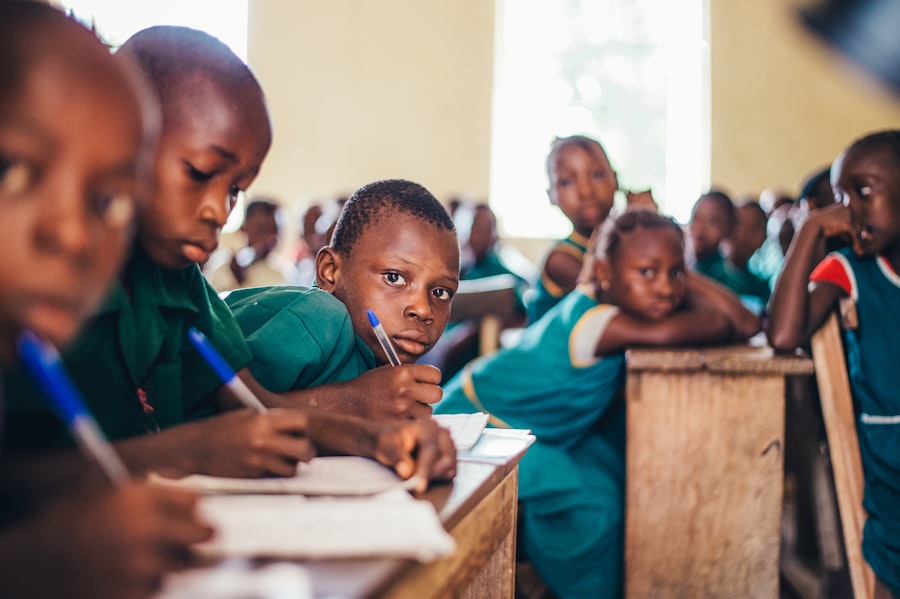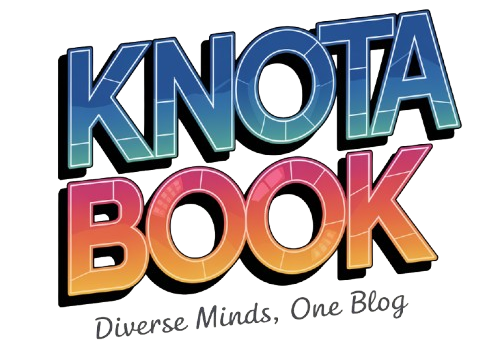The term “2k education” refers to the educational landscape that has emerged in the 21st century, characterized by the integration of technology and innovative teaching methodologies. This evolution has been driven by a confluence of factors, including the rapid advancement of digital technologies, the increasing availability of online resources, and a growing recognition of the need for education to adapt to the demands of a globalized economy. As we moved into the new millennium, traditional educational paradigms began to shift, paving the way for more dynamic and interactive learning environments.
The rise of 2k education signifies not just a change in tools but a fundamental transformation in how knowledge is imparted and acquired. One of the most significant aspects of 2k education is its emphasis on accessibility and inclusivity. With the proliferation of the internet and mobile devices, educational resources are now available to a broader audience than ever before.
Online courses, webinars, and educational platforms have democratized learning, allowing individuals from diverse backgrounds to access high-quality educational materials. This shift has been particularly impactful in regions where traditional educational infrastructure is lacking. For instance, platforms like Khan Academy and Coursera have made it possible for learners in remote areas to engage with world-class educators and resources, thereby bridging the educational divide that has historically existed.
Key Takeaways
- 2k education is on the rise, with a focus on preparing students for the future through technology and personalized learning.
- Technology is transforming the classroom, providing new tools and resources for both teachers and students.
- Personalized learning allows for tailored education experiences, catering to individual student needs and learning styles.
- Artificial intelligence is playing a growing role in education, from personalized tutoring to grading and assessment.
- Virtual and augmented reality are creating immersive learning experiences, bringing education to life in new and exciting ways.
Technology in the Classroom
Enhancing Collaboration and Communication
For example, platforms like Google Classroom allow teachers to assign work, provide feedback, and foster communication in real-time, making the learning process more fluid and responsive to student needs.
Accommodating Different Learning Styles
Moreover, technology has enabled educators to tailor their teaching strategies to accommodate different learning styles. With resources such as educational apps and online simulations, teachers can provide varied instructional methods that cater to visual, auditory, and kinesthetic learners.
Fostering Curiosity and Love for Learning
This adaptability is crucial in a diverse classroom where students may have different strengths and weaknesses. For instance, a science teacher might use virtual labs to allow students to conduct experiments that would be logistically challenging in a physical classroom setting. This not only enhances understanding but also ignites curiosity and fosters a love for learning.
Personalized Learning

Personalized learning represents a paradigm shift in education, moving away from the one-size-fits-all approach that has dominated traditional classrooms for decades. This model recognizes that each student has unique needs, interests, and learning paces. By leveraging technology, educators can create customized learning experiences that empower students to take charge of their education.
For instance, adaptive learning platforms like DreamBox Learning or IXL use algorithms to assess a student’s understanding in real-time and adjust the difficulty of tasks accordingly. This ensures that students are neither bored with material that is too easy nor overwhelmed by content that is too challenging. In addition to adaptive technologies, personalized learning often incorporates student choice into the curriculum.
Educators can offer options for projects or topics that align with students’ interests, fostering greater engagement and motivation. For example, a history teacher might allow students to choose between researching different historical figures or events for a project. This autonomy not only enhances student investment in their learning but also cultivates critical thinking skills as they explore subjects that resonate with them personally.
The Role of Artificial Intelligence
| Metrics | Data |
|---|---|
| AI Market Size | 20.67 billion in 2021 |
| AI Job Growth | 71% increase in AI-related job postings |
| AI Adoption | 37% of organizations have implemented AI in some form |
| AI Impact on GDP | AI could contribute 15.7 trillion to the global economy by 2030 |
Artificial intelligence (AI) is increasingly becoming a cornerstone of modern education, offering innovative solutions to enhance teaching and learning processes. AI-powered tools can analyze vast amounts of data to provide insights into student performance, helping educators identify areas where students may be struggling. For instance, platforms like Gradescope utilize AI to streamline grading processes, allowing teachers to focus more on instruction rather than administrative tasks.
This efficiency not only saves time but also enables educators to provide more timely feedback to students. Furthermore, AI can facilitate personalized learning experiences by tailoring content to individual student needs. Intelligent tutoring systems can adapt lessons based on a student’s progress and comprehension levels, providing targeted support where necessary.
For example, Carnegie Learning’s MATHia software uses AI algorithms to assess student responses and adjust instructional pathways accordingly. This level of customization ensures that each learner receives the support they need to succeed while promoting self-directed learning.
Virtual and Augmented Reality
Virtual reality (VR) and augmented reality (AR) are emerging technologies that are transforming educational experiences by immersing students in interactive environments. VR allows learners to explore complex concepts through simulations that would be impossible or impractical in real life. For instance, medical students can practice surgical procedures in a risk-free virtual environment, gaining hands-on experience without endangering patients.
Similarly, history classes can take virtual field trips to ancient civilizations or significant historical events, providing students with a deeper understanding of context and culture. AR complements this immersive experience by overlaying digital information onto the real world. Applications like Google Expeditions enable students to visualize complex scientific processes or historical events right in their classroom or home environment.
By using AR technology, educators can create engaging lessons that capture students’ attention and enhance retention of information. For example, biology students can use AR apps to explore the human body in three dimensions, allowing them to interact with anatomical structures in ways that traditional textbooks cannot replicate.
Skills for the Future

As we navigate an increasingly complex global landscape, the skills required for success are evolving rapidly. The 21st-century workforce demands not only technical proficiency but also critical thinking, creativity, collaboration, and adaptability. Educational institutions are recognizing this shift and are beginning to emphasize these competencies within their curricula.
Project-based learning is one effective approach that encourages students to work collaboratively on real-world problems, fostering essential skills such as teamwork and problem-solving. Moreover, digital literacy has become a fundamental component of modern education. As technology continues to permeate every aspect of life, students must be equipped with the skills to navigate digital environments effectively.
This includes understanding how to evaluate online information critically, use digital tools for communication and collaboration, and protect their privacy in an increasingly connected world. Schools are integrating coding and computational thinking into their curricula to prepare students for careers in technology-driven fields.
Access to Education
Access to education has been significantly transformed by advancements in technology, yet disparities still exist across different regions and demographics. While online learning platforms have made it possible for many individuals to pursue education remotely, not everyone has equal access to the necessary resources such as reliable internet connections or devices.
Efforts are being made globally to address these inequities through initiatives aimed at improving infrastructure and providing resources for underserved populations. Organizations like One Laptop per Child have worked tirelessly to distribute affordable laptops to children in developing countries, enabling them to access educational content online. Additionally, governments are increasingly recognizing the importance of digital equity and are implementing policies aimed at expanding broadband access in rural areas.
By addressing these challenges head-on, we can work towards a more equitable educational landscape where all learners have the opportunity to thrive.
Challenges and Opportunities
While the rise of 2k education presents numerous opportunities for innovation and improvement in teaching and learning practices, it also brings forth significant challenges that must be addressed.
This disparity can exacerbate existing inequalities in education and limit opportunities for those who are already disadvantaged.
Additionally, there is an ongoing debate about data privacy and security in educational technology. As schools increasingly adopt digital tools that collect student data for personalized learning purposes, concerns arise regarding how this information is stored and used. Educators must navigate these complexities while ensuring that they protect student privacy without compromising the benefits of data-driven instruction.
Despite these challenges, the potential for positive change within 2k education is immense. By embracing technology thoughtfully and inclusively, educators can create engaging learning environments that prepare students for success in an ever-evolving world. The key lies in collaboration among educators, policymakers, technologists, and communities to ensure that all learners have access to high-quality education that meets their needs and aspirations.
FAQs
What is 2k education?
2k education refers to the use of technology and digital tools in the field of education to enhance learning experiences and improve educational outcomes.
What are some examples of 2k education tools?
Some examples of 2k education tools include interactive whiteboards, educational apps, online learning platforms, virtual reality simulations, and digital textbooks.
How does 2k education benefit students?
2k education can benefit students by providing personalized learning experiences, improving engagement and motivation, facilitating access to educational resources, and developing digital literacy skills.
What are the challenges of implementing 2k education?
Challenges of implementing 2k education include the digital divide, lack of access to technology and internet connectivity, privacy and security concerns, and the need for teacher training and professional development.
How is 2k education being used in schools?
2k education is being used in schools to support blended learning models, flipped classrooms, personalized learning initiatives, and to provide access to educational resources and tools for both in-person and remote learning.

